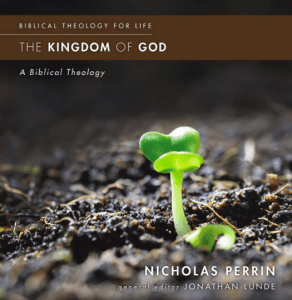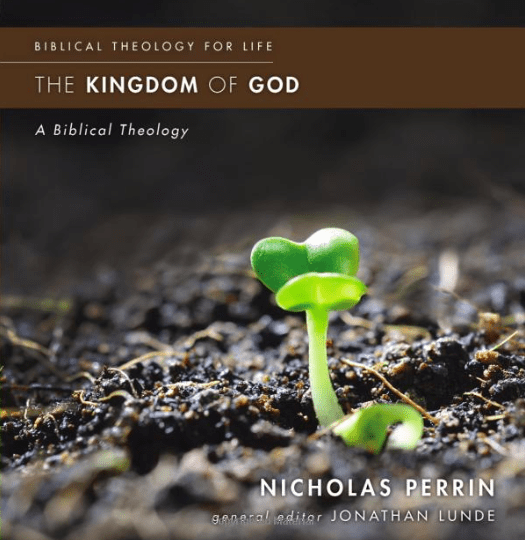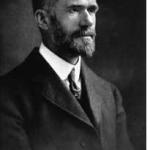 Because René Padilla has been so concerned with the marriage of gospel and social justice/action, he has also been concerned with the relation of the church and the kingdom. He outlines his view in his book Mission Between the Times.
Because René Padilla has been so concerned with the marriage of gospel and social justice/action, he has also been concerned with the relation of the church and the kingdom. He outlines his view in his book Mission Between the Times.
He sees Jesus himself as the present reality of the kingdom. He dabbles (not all that accurately and with sweeping generalizations) in Jewish history and states that Judaism had a concept of two ages (the Present Age and the Age to Come), which is accurate, but sees it as a period “with an exaggerated interest in the future and a persistent scorn for the present” (200). [The Age to Come theory is right; the generalization about Judaism is reductionism by over playing some of apocalypticism — there was all kinds of variety in Jewish eschatology, but most of it was intensely concerned with the present too.] The Prophets, he says, were more balanced.
The point is that in the Present Age God has acted in Christ to inaugurate the Age to Come: the midpoint of history is in Christ with a future consummation. His theory here is that of Oscar Cullmann and also of George Ladd. This is where he takes kingdom then: “the kingdom of God is God’s dynamic power made visible through concrete signs pointing to Jesus as the Messiah” (202). Here he focuses on kingdom as God’s redemptive act. Yes, I say, but kingdom here has lost its people theme (Israel is called God’s kingdom and “nation” is the natural equivalent of “kingdom” is Jewish literature, not “redemption”. To be sure, there are five elements of kingdom, including the redemptive theme: a king, a rule (redemptive, governing), a people, a law and a place.
This is where Padilla takes us and I think he’s actually pushing the envelope to a larger than redemption theme (reformatted):
His announcement “The time is fulfilled, and the kingdom of God has come near; repent and believe in the good news” (Mark 1:15) is not a verbal message given in isolation from the signs that corroborate it; rather, it is good news concerning something that can be seen and heard. As Jesus’ words imply,
(1) it is news concerning a historical fact, an event that is taking place and that affects human life in every way;
(2) it is news that is of public interest, having to do with the whole of human history;
(3) it is news related to the fulfillment of Old Testament prophecy (the malkuth Yahveh announced by the prophets and celebrated by Israel has become a present reality);
(4) it is news calling for repentance and faith;
and (5) it is news resulting in the formation of a new community, a community of people who are personally called (202).
I’ll reframe this: kingdom is a universalizing act of God (1 and 2); it is in continuity with the story of Israel; it summons a response; and it creates a new people. Three solid elements, focusing on eschatological realization.
So what is the church? Padilla, true to the Cullmann-Ladd-Bruce time of his work, sees kingdom and church related but very distinguishable, focusing on kingdom as an eschatological reality and dismissing the church as a similar eschatological reality. Here is his summary:
The New Testament presents the church as the community of the kingdom in which Jesus is acknowledged as Lord of the universe and through which, in anticipation of the end, the kingdom is concretely manifested in history (202).
Kingdom for Padilla is mostly redemptive power at work in and through Christ but it can’t be equated with church (he quotes Ladd, who was himself fighting dispensationalism in his kingdom theory). The church is the organism of Christ made possible by the Spirit. He contends we cannot equate the two nor can we separate the two — this needs to be spelled out because as I read him there’s more distinguishing than this formula suggests. So the church is a “manifestation” of the kingdom, whose redemptive power is unleashed in Christ through the Spirit in the church. Good works then are manifestations of the kingdom at work in this world.
Last, Padilla examines kingdom and world. (A topic often ignored, at the topic’s own peril.) The world he says has been placed under the Lordship of Christ (206). Christ is king of the cosmos. The church then is the expression of the universal lordship of Jesus (206). Kingdom is an eschatological order that one must enter (here is the important theme of redemption; kingdom people are redeemed people).
This one claim seems to capture the essence of Padilla’s view:
Here and now, in anticipation of the end, in the church and through the church, the whole world is placed under the Lordship of Christ and therefore under God’s promise of a new heaven and a new earth in the kingdom of God (208).
In Padilla we see both a strong claim for evangelism and social responsibility, a kingdom theory of the church as the place where kingdom is supposed to be manifested, and a strong emphasis on Christ as lord over all. His theory reflects the evangelical tension of kingdom and church in this: there is a desire to make them separate in this world but make the church the place where kingdom is proclaimed (less emphasis on embodiment of kingdom in a local church, but seemingly present). That tension has been ended for many today who see the kingdom as little more than social activism (an ethic) or who reshape it toward cultural transformation (politicizing). He has a very strong christological and ecclesiological emphasis.
But I also see a significant and substantive neglect of how the term “kingdom” is used in the OT and in Judaism (like Josephus), where it refers uniformly to a people governed by a king. Padilla’s emphasis is that kingdom is an unleashed redemptive power and less a place manifesting that redemptive power. In other words, the kingdom has been de-Israelized to make his theory work.















